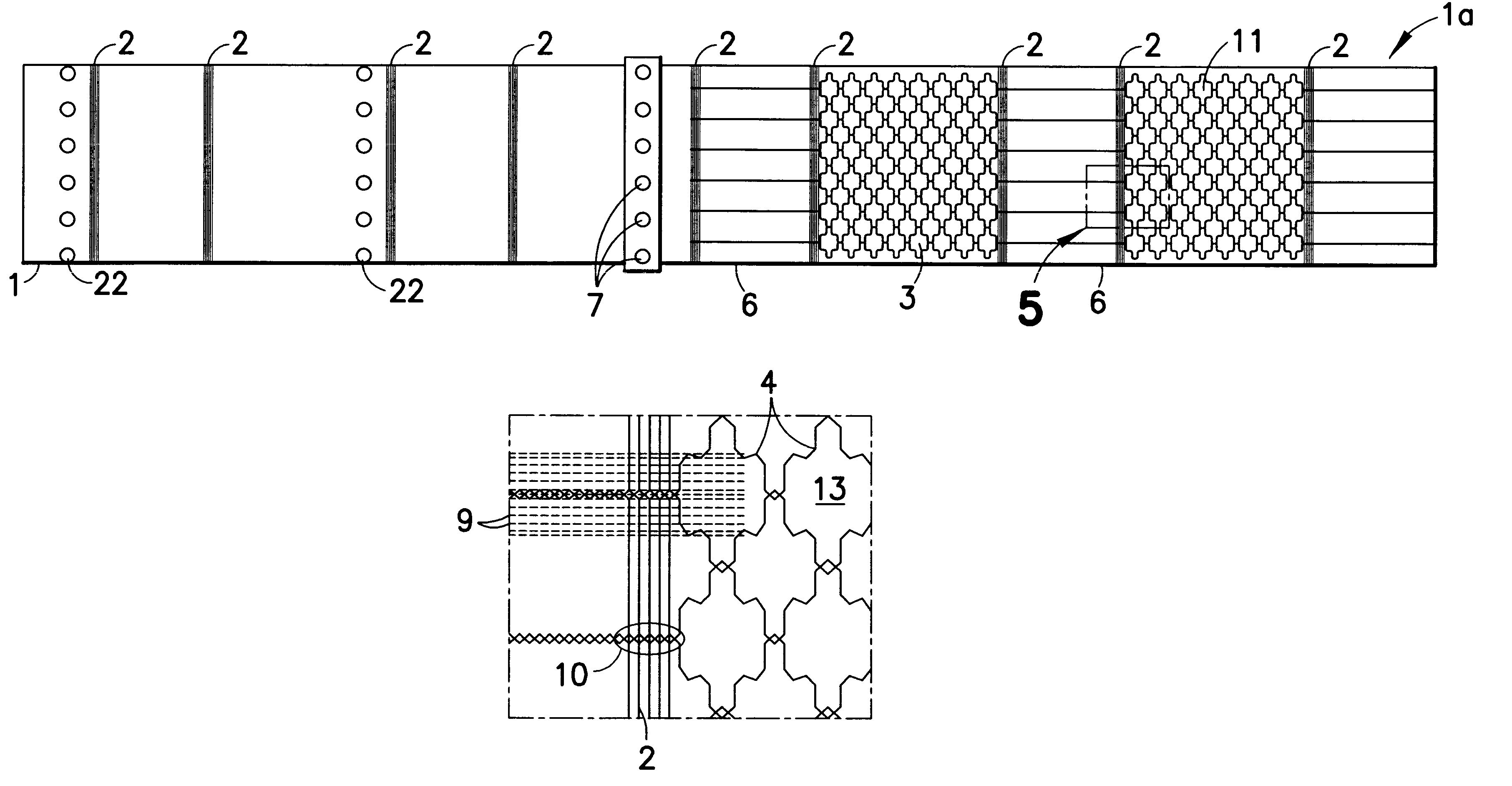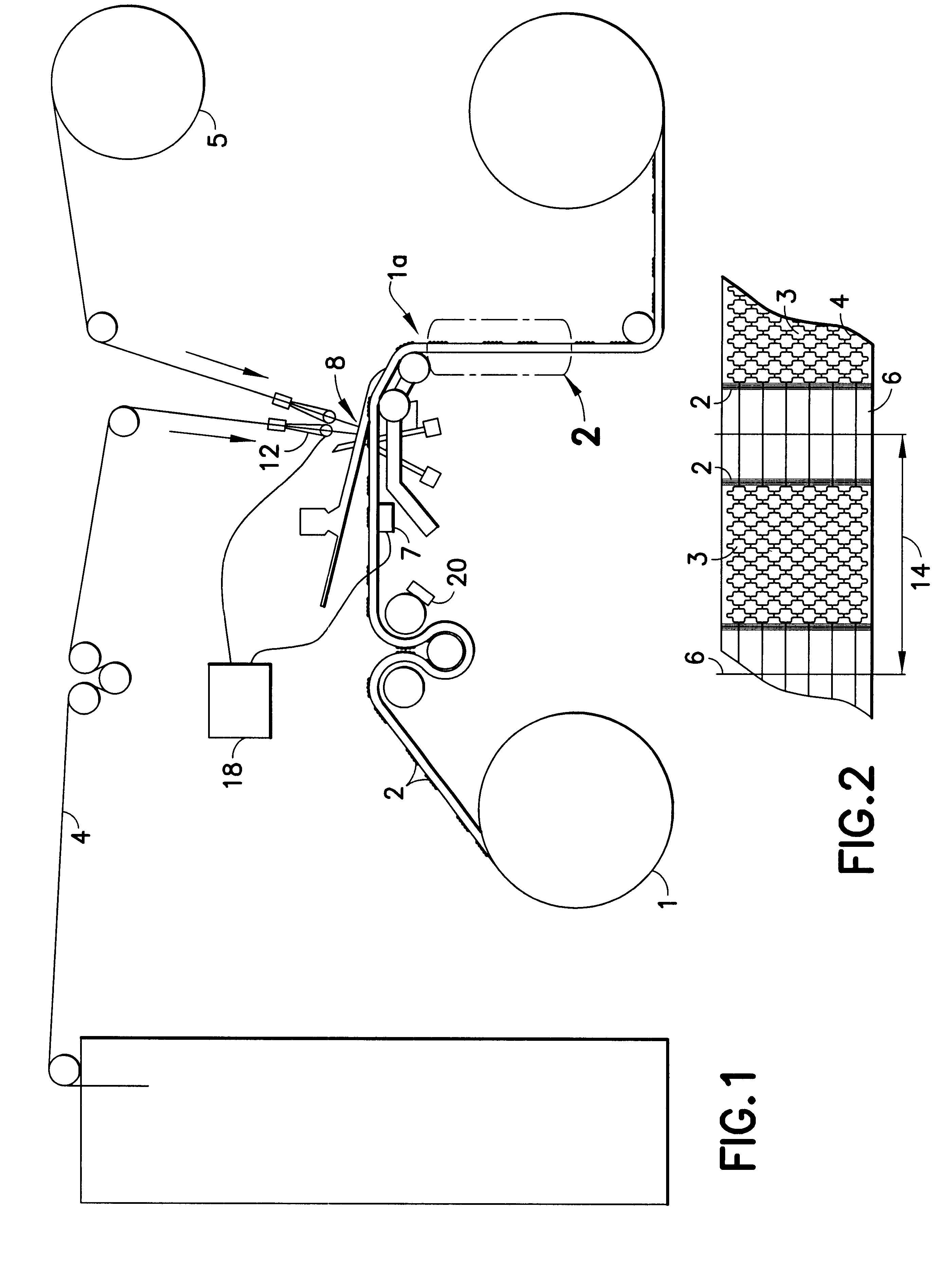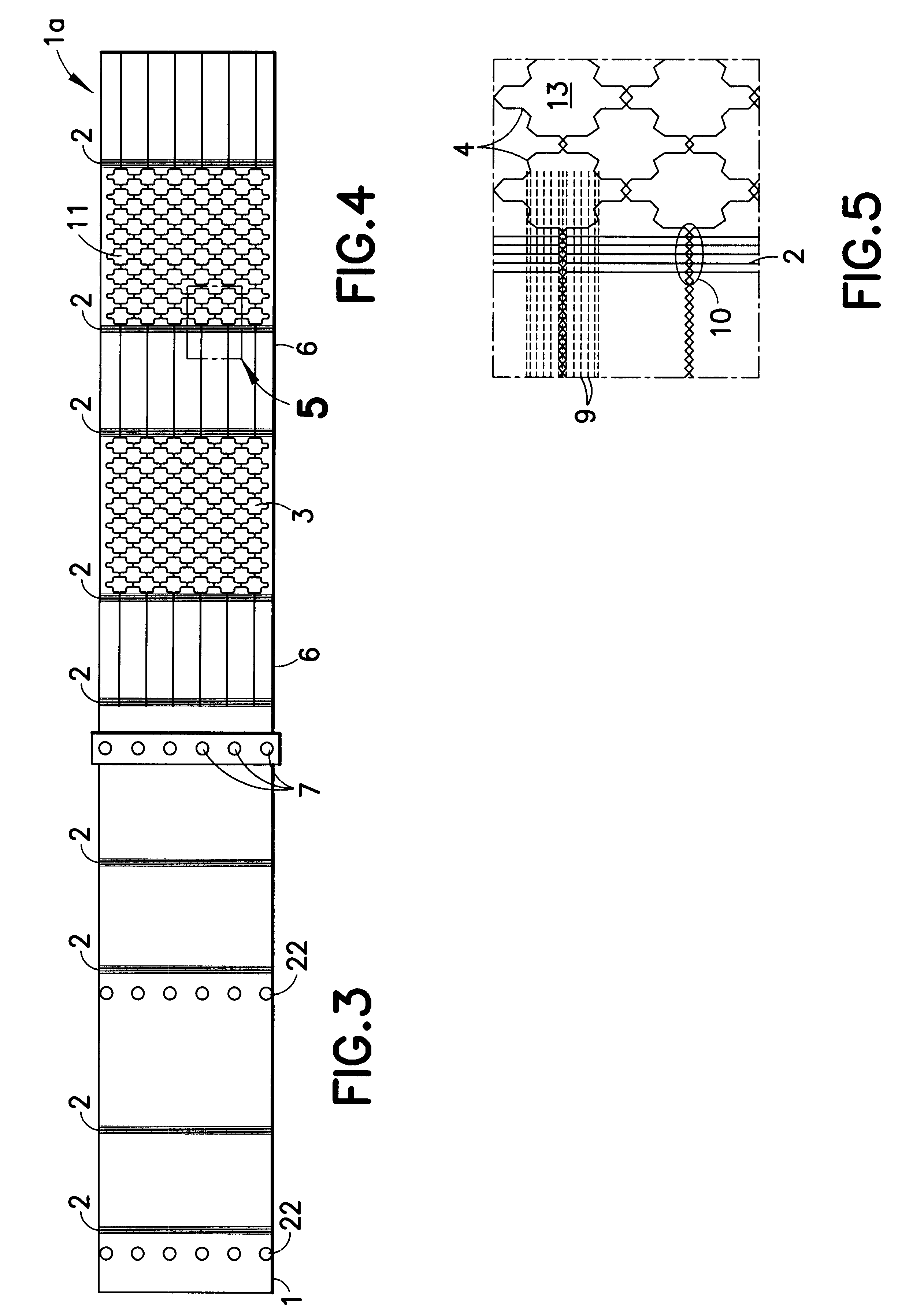Knitted two-dimensional heating element
a heating element and two-dimensional technology, applied in the field of two-dimensional heating elements, can solve the problems of increasing and undesirable heat at the connection, consuming a large amount of heating conductor material during the connection, and high heat loss in the area of contact conductors
- Summary
- Abstract
- Description
- Claims
- Application Information
AI Technical Summary
Benefits of technology
Problems solved by technology
Method used
Image
Examples
Embodiment Construction
FIG. 1 is a schematic diagram showing an apparatus for producing a two-dimensional heating element according to a method of the present invention.
According to this method, a base material 1 such as, for example, a textile fabric, a knitted fabric, or a nonwoven fabric having contact conductors 2 is led from a roll and over a number of guide rollers, past a sensor system 7, to a knitting machine including a guide rail 12 and needles 8 required for the knitting process.
At the same time, heating conductors 4 (only one heating conductor 4 is shown in FIG. 1) are led over a number of guide rollers and fed to the guide rail 12. The guide rail 12 is controlled via the sensor system 7 by a computer 18. The sensor system 7 detects and processes the positions of the individual contact conductors 2. Accordingly, defined control of the guide rail 12 may be effected in response to the positions of the contact conductors 2.
To fix the heating conductor onto the base material 1, a textile thread 5 ...
PUM
| Property | Measurement | Unit |
|---|---|---|
| electrically conductive | aaaaa | aaaaa |
| heating capacity | aaaaa | aaaaa |
| area | aaaaa | aaaaa |
Abstract
Description
Claims
Application Information
 Login to View More
Login to View More - R&D
- Intellectual Property
- Life Sciences
- Materials
- Tech Scout
- Unparalleled Data Quality
- Higher Quality Content
- 60% Fewer Hallucinations
Browse by: Latest US Patents, China's latest patents, Technical Efficacy Thesaurus, Application Domain, Technology Topic, Popular Technical Reports.
© 2025 PatSnap. All rights reserved.Legal|Privacy policy|Modern Slavery Act Transparency Statement|Sitemap|About US| Contact US: help@patsnap.com



